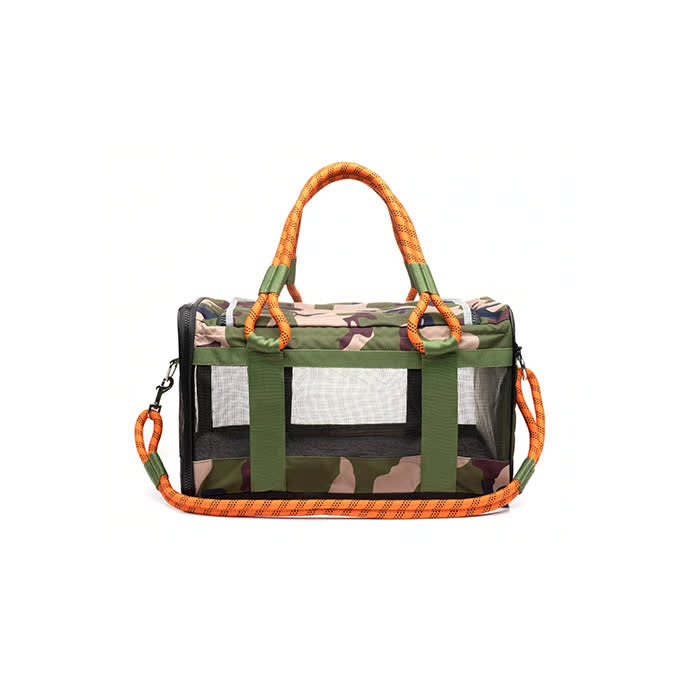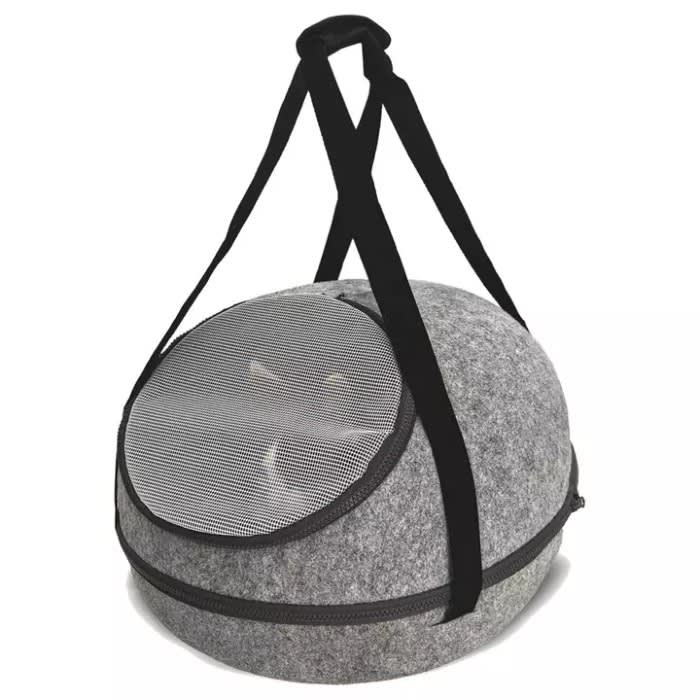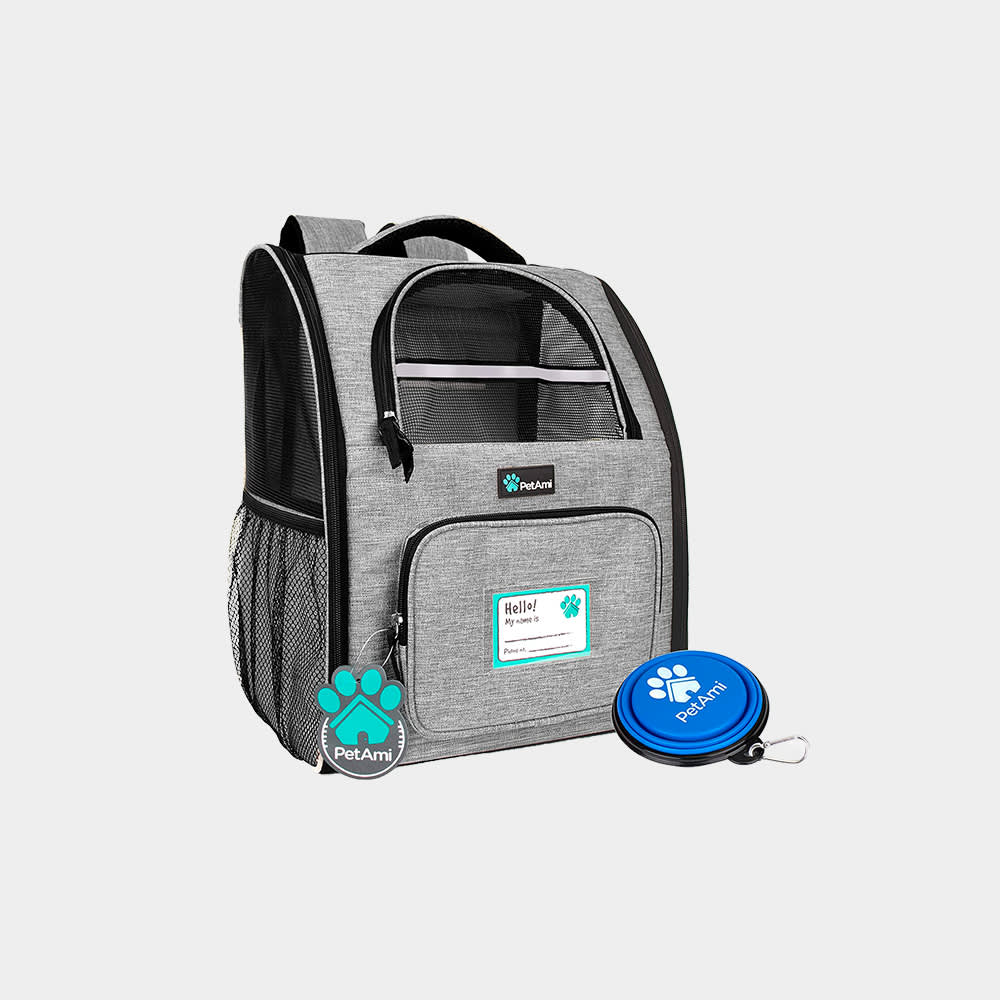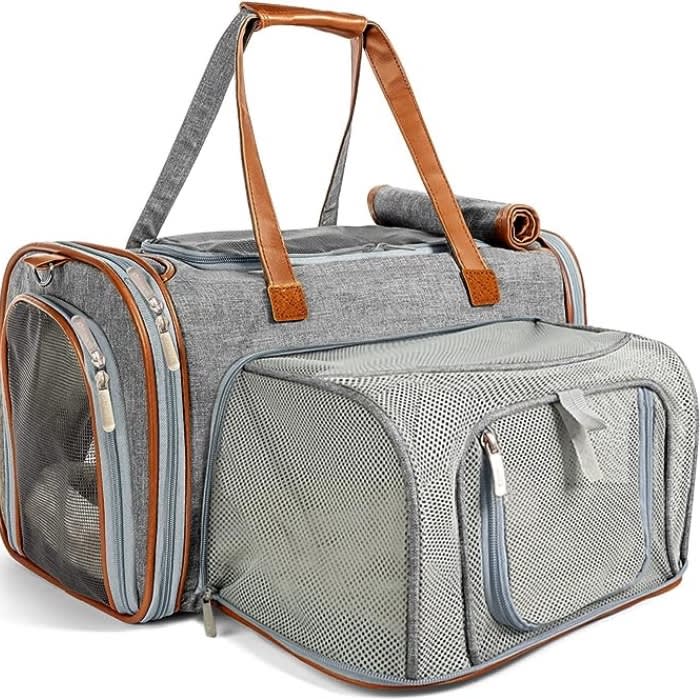Cat Carriers For a Quiet Ride
It’s the journey, not the destination

Share Article
Vases, baskets, tissue boxes. Cats love contorting themselves into impossibly small spaces, but present them with a carrier and they run a mile. Clearly, the self-imposed claustrophobia is allowed on their terms only. And can you blame them? A trip to the vet, especially on the bus, is a bumpy one, rife with strangers’ shrill coos and up-close-and-personal inquisitive dog noses. Read on for tips on choosing the best cat carrier for your cat, plus eight of our top picks.
How to choose a cat carrier
“There are so many things coming at them and they can’t go anywhere,” explains Cristin Tamburo, a certified feline behaviour consultant. “The experience leaves them feeling vulnerable, like a human swimming with sharks.” While you’re probably never going to convince your cat that curling up in a carrier will lead to good things, the least you can do is make them feel comfortable in one that’s the right size, well-ventilated, sturdy and safe. “I see people use the same carrier that they bought for their kitten. Your cat shouldn’t be squished into the carrier and unable to move. They should have room to twist themselves around from one side of the carrier to the other.”
Experienced vet Dr Tammy Hunter agrees. “The ideal carrier is strong, lightweight and waterproof, with a large opening to allow easy access to the cat, and an easy to remove top with ‘quick release’ fasteners,” she says. “If you have a carrier with a removable top, your cat may be able to remain nestled in the bottom of the carrier while your vet performs some parts of the routine physical examination. The most important criteria for a carrier: it should be easy to clean and you should be able to get your cat in and out of it without a struggle.”
Acclimatising your cat to a new carrier
Speaking of struggles... Whichever carrier best suits your cat, Marilyn Krieger, certified cat behaviourist and author of Naughty No More!, recommends leaving it out in your home for at least a week before a vet appointment or travel plans to desensitise your cat to it: “Leave the door open and put a bed or towel inside. Play with your cat near it. Throw treats and toys inside. This will help take away their fear of it.”
Vet Dr Cheryl Yuill adds: “Another way to prepare for your visit to the vet is to spritz the carrier with three to four squirts of Feliwayopens in new tab, a synthetic copy of the cat’s facial pheromone, which may help create a sense of familiarity or security in the cat’s environment. If your cat already has negative associations with the current carrier that you are using, consider purchasing a new carrier that does not resemble the old one.”
The 8 best expert-recommended cat carriers
If you’re searching for the perfect travel carrier for your kitty, here’s a round-up of the best cat carriers recommended by a cat behaviourist.
Btw, our editors (and their pets) picked out these products. They’re always in stock at the time we publish, but there’s a chance they’ll sell out. If you do buy through our links, we may earn a commission. (We’ve got a lot of toys to buy over here, you know?)

Katherine Tolford
Katherine Tolford writes about the pet industry and veterinary medicine. Her work, which has appeared on PetMD, Chewy, and Floof, has helped pet parents better understand their pets’ health. She’s also a pet parent to Milo, a loud-mouthed tuxedo cat, who likes to attempt backwards somersaults on the couch.
Related articles
![Cat with ginger medium length hair and green eyes]()
I Tested My Cat’s DNA, and Here Are the Results
From health predispositions to breed history, Wisdom Panel’s genetic testing revealed my cat’s internal world
![Two cats walking with their tails sticking straight up]()
Tail Talk: What Is Your Cat Trying to Tell You?
Cats are enigmas. But their tail movements can reveal a lot about their moods
![A cat outside showing its bottom teeth.]()
What’s All the Cat Chatter About?
Scientists believe they could be mimicking the calls of their prey











